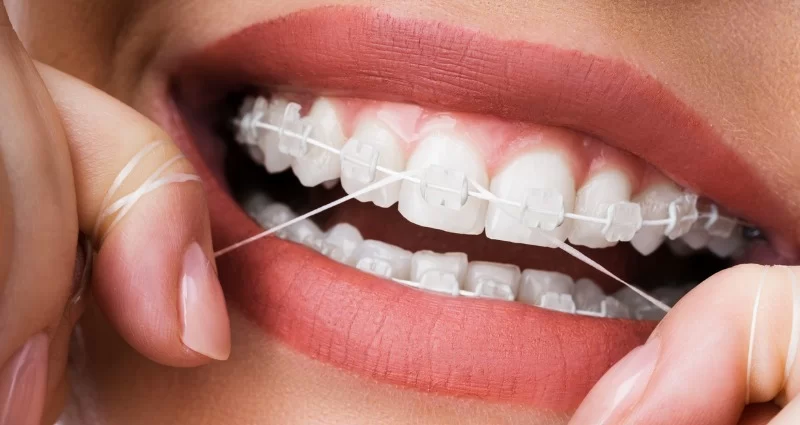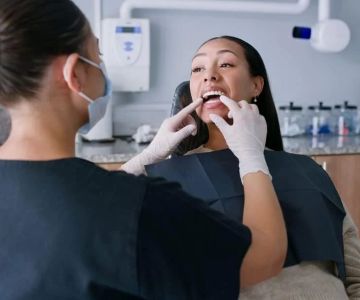
- Importance of Proper Flossing for Braces Wearers
- Challenges Faced by Braces Wearers When Flossing
- Step-by-Step Guide to the Best Flossing Technique for Braces
- Personal Experiences and Success Stories
- Professional Advice and Recommended Products
Importance of Proper Flossing for Braces Wearers
Maintaining excellent oral hygiene is essential for everyone, but it becomes even more critical for braces wearers. Braces create additional nooks and crannies where food particles and plaque can accumulate, increasing the risk of cavities, gum disease, and staining. The best flossing technique for braces wearers ensures these problem areas are thoroughly cleaned without damaging orthodontic appliances.
Proper flossing not only helps prevent dental issues during treatment but also contributes to a healthier, brighter smile once braces are removed. Developing effective flossing habits early can save time, money, and discomfort down the line.
Why Flossing Matters More with Braces
Braces wires and brackets trap food, making brushing alone insufficient. Without careful flossing, plaque buildup around the brackets can lead to inflammation and even permanent enamel damage. Therefore, mastering the best flossing technique for braces wearers is a vital part of oral care during orthodontic treatment.
Challenges Faced by Braces Wearers When Flossing
Flossing with braces can feel tricky and time-consuming, which leads many to avoid it altogether. The wires block easy access between teeth, making traditional flossing methods ineffective or frustrating.
Common challenges include:
1. Difficulty Threading Floss Under Wires
The orthodontic wire blocks direct floss passage, requiring extra effort to get floss beneath it without damaging the braces or hurting gums.
2. Increased Sensitivity and Gum Inflammation
Braces can irritate gums, so aggressive flossing can worsen inflammation or cause bleeding, making flossing uncomfortable and discouraging consistent care.
3. Time and Patience Required
Flossing around brackets takes more time and precision, which can feel overwhelming, especially for younger patients or busy adults.
Step-by-Step Guide to the Best Flossing Technique for Braces
Despite these challenges, with the right approach, flossing with braces becomes manageable and effective. Here’s a detailed method to help you achieve optimal oral hygiene:
Step 1: Choose the Right Floss
Using floss designed for braces, such as orthodontic floss with a stiffened end or floss threaders, makes threading easier. Waxed floss can glide more smoothly between teeth and braces.
Step 2: Thread the Floss Carefully
Use a floss threader to gently guide the floss under the orthodontic wire. Take your time to avoid snapping the floss or injuring the gums.
Step 3: Floss Between Teeth
Once threaded, move the floss up and down along the sides of each tooth, curving it gently around the base just below the gum line. This removes plaque and trapped food without damaging the braces or gums.
Step 4: Repeat for Every Tooth
Repeat the process between all teeth, focusing on the areas around brackets where plaque accumulates most. Be patient—this routine may take 10-15 minutes initially but will get easier with practice.
Step 5: Rinse and Inspect
After flossing, rinse your mouth thoroughly to wash away loosened debris. Regularly check your teeth and gums in the mirror for signs of plaque buildup or inflammation.
Personal Experiences and Success Stories
Anna, a teenager with braces, shared how she struggled with flossing until her orthodontist recommended floss threaders and guided her through the process. Within weeks, she noticed her gums became less inflamed, and her breath fresher. She now enjoys her flossing routine and encourages friends to do the same.
Similarly, Michael, a working professional, found that investing in a water flosser alongside traditional flossing significantly improved his gum health. This combination allowed him to maintain great oral hygiene without frustration, even with his busy schedule.
Professional Advice and Recommended Products
Experts emphasize the importance of consistency and technique over speed when flossing with braces. Dentistry Toothtruth offers a curated selection of flossing tools designed for braces wearers, including floss threaders, orthodontic floss, and water flossers, helping users find the most suitable products for their needs.
Regular dental checkups complement daily flossing by ensuring any early signs of gum inflammation or cavities are addressed promptly. Incorporating these professional insights alongside the best flossing technique for braces wearers creates a comprehensive oral care routine that supports healthy teeth and gums throughout orthodontic treatment.







 Westgate Dental Arts
Westgate Dental Arts Coventry Family Dental
Coventry Family Dental Familia Dental
Familia Dental Dr. Daniel S. Fife, DDS
Dr. Daniel S. Fife, DDS Dentistry At Suburban Square: Michael I. Wollock, DMD
Dentistry At Suburban Square: Michael I. Wollock, DMD Comfort Care Dental
Comfort Care Dental The Importance of Oral Health Education During Pregnancy for a Healthy Pregnancy
The Importance of Oral Health Education During Pregnancy for a Healthy Pregnancy Why Skipping Dental Checkups Can Lead to Bigger Oral Health Problems
Why Skipping Dental Checkups Can Lead to Bigger Oral Health Problems Advantages of Porcelain Dental Restorations
Advantages of Porcelain Dental Restorations Best Tips for Brushing Your Teeth Properly for Healthy Gums: Essential Techniques for Oral Health
Best Tips for Brushing Your Teeth Properly for Healthy Gums: Essential Techniques for Oral Health How Can Diabetes Cause Tooth and Gum Problems? Preventing and Managing Oral Health Issues
How Can Diabetes Cause Tooth and Gum Problems? Preventing and Managing Oral Health Issues Healthy Habits for Promoting Good Oral Health and Hygiene: Tips for a Healthy Smile
Healthy Habits for Promoting Good Oral Health and Hygiene: Tips for a Healthy Smile